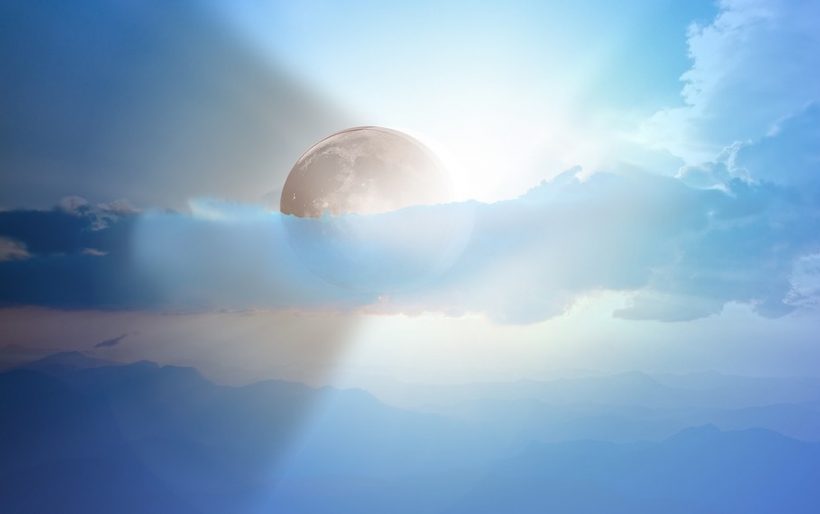
by Somya Devi | Jun 17, 2019 | Astrology, Conjunctions, Eclipses
Today’s full Moon reached maximum brightness in sidereal Sagittarius at 1:31 am PDT (June 17, 2019), in Moola nakshatra. In the galactic center, this full Moon is literally in the middle of a very polarized sky. The chart below shows this extreme polarization, with Moon joined by two malefics, Ketu and retrograde Saturn, opposite Sun, Rahu, Mars (the other 3 malefics) and Mercury. Jupiter and Venus align in opposition on the Taurus-Scorpio axis.
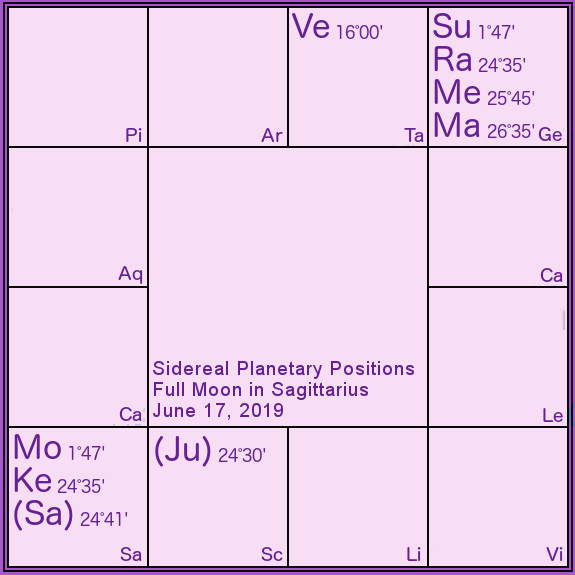
Sagittarius
With the Sun in Gemini and the full Moon in Sagittarius, we get a chance to experience the contrast between our intellectual, analytical, and flexible side and our more inspired, philosophical, and perhaps even dogmatic side. Sagittarius is a sign of inspiration, ruled by Jupiter, and is a place where we often take action (fire sign) over principles and beliefs that we believe in.
Gemini, on the other hand, is an airy dual sign ruled by Mercury, the planet of the intellect. During the Sun-in-Gemini cycle we may find ourselves more mobile and flexible than usual, more social and communicative. The malefics joining the Sun, however, can add intensity to our communication style this month, but hopefully are aimed at helping us to purify and strengthen ourselves as we shine light in the dark corners.
With Moon, Ketu, and Saturn in Sagittarius, we should be able to see where we went wrong in the past (Ketu), as far as taking a stand over principles, and also where we need to be more committed in the future (Saturn).
Moola Nakshatra
The full Moon was at 1°47’ of sidereal Sagittarius, aligning with the Vedic nakshatra Moola (or Mula), “the root.” With the full Moon here amplified by all the conjoining and aligning planets, we have a great opportunity to get to the root of some core issues. The planets bring forth lessons to help us to grow, and behind every challenge there is an underlying cause or origin. Sometimes the origin of a certain karma we are experiencing may be from a past action in this life, or a past lifetime. It’s okay if we aren’t aware of the exact circumstance that created our present situation, but it’s important that we pay attention to the lesson that is being shown to us.
Five Malefics Joining
The so-called “malefics,”— Sun, Mars, Saturn, Rahu and Ketu — are the grahas or planets that attempt to teach us our karmic lessons through more challenging means. The Sun is like the divine father, and yet, like a father, he can feel tough as he teaches us, his powerful rays sometimes burning as they attempt to purify us of negativities. Mars, the planet of strength, compels us to strengthen ourselves through discipline or by asserting ourselves against challengers, calling forth our inner warrior. Saturn, like an old wise person, reminds us that time will pass and our actions will have long-term consequences, thus compelling us to work hard and endure stress and pressure.
The nodes, Rahu and Ketu, are the “shadow planets.” We cannot see them as they do not have planetary bodies like the others, but we see shadows appear over the Sun and Moon when they align with the nodes during eclipses. They relate to some of our most subconscious karma, the places where we are often confused, and their lessons take the longest to learn. These lessons become more obvious and pointed during “eclipse season,” which is currently upon us.
Look for the exact alignment of Saturn and Ketu on June 23rd (mean node calculation). This will be a critical moment for balancing the lessons of the past with the plan for the future. Stay as present, mindful and grounded as possible to yield positive change, instead of implosive force.
Oncoming Eclipses
We are in the orb of the eclipses already, as Sun and Moon are joined the nodes, and we are approaching the partial solar eclipse on the New Moon of July 2nd, 2019. The eclipse will be visible only from South America and the southern Pacific, but its effects will be felt by all of us. You may already be experiencing some disruption or disturbance in the areas of your life indicated by Sagittarius and Gemini in your natal chart. It is important to pay attention to the challenging energy that is arising, and examine where you can improve yourself in order to meet this energy better.
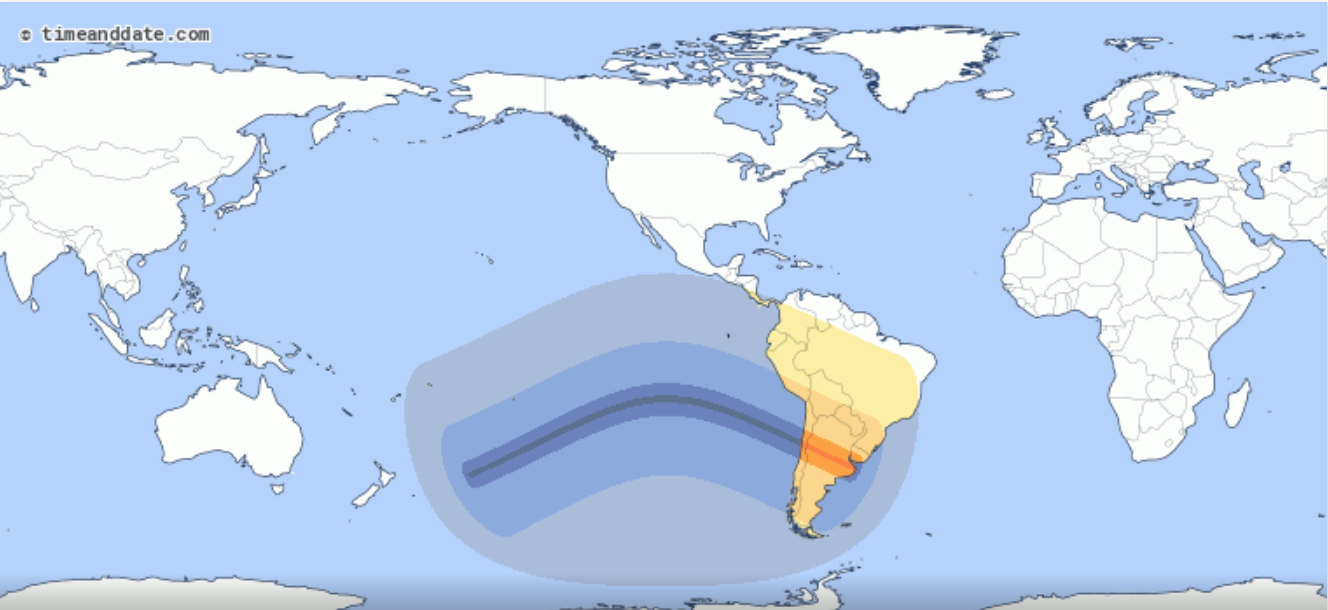
The second eclipse of this set will be on the Guru Purnima full Moon of July 16th. This partial lunar eclipse will be visible from much of the world. It is best to focus on spiritual practices on the days and times of the eclipses, and avoid making any important decisions under stress, duress or confusion. Self-inquiry and insight can lead to some real transformation, however, if you apply yourself to your practices throughout the eclipse season.
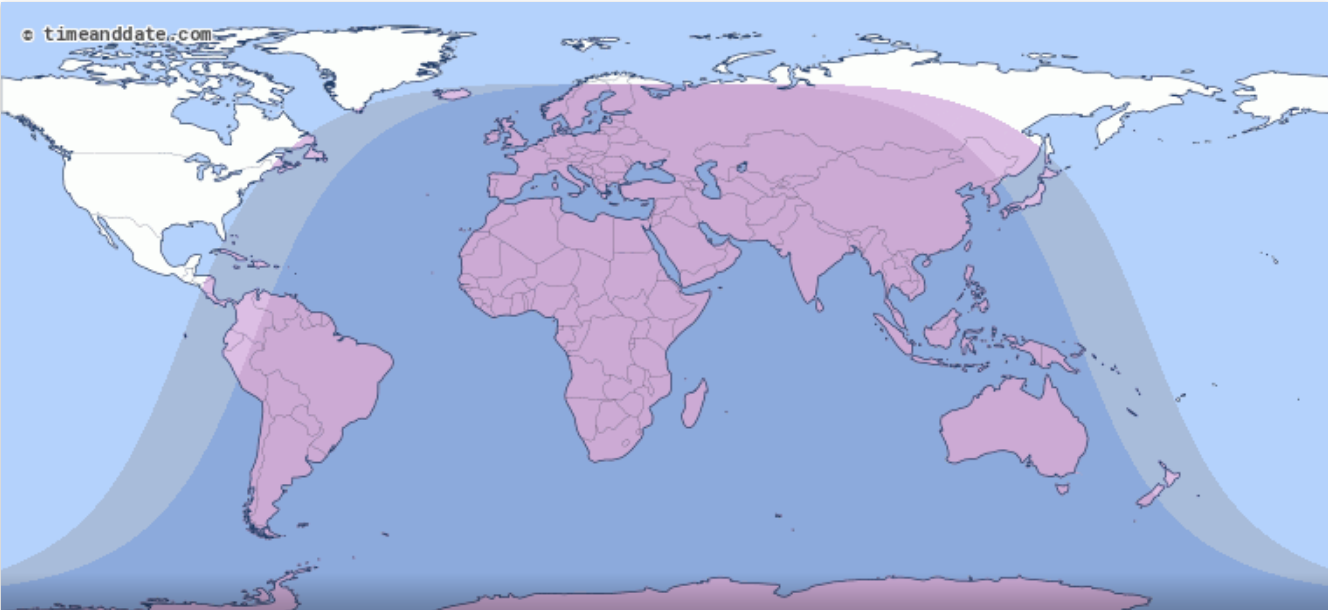
Solstice
We are also approaching the solstice on Friday, June 21st. This will be the longest day of the year in the northern hemisphere and the shortest day in the South. The Sun is at its most northern course and dominates the days during this time, burning and purifying a lot in its path and offering abundant energy for outward action and leadership. In the south, this may be the most inward time of year, as the darkest day comes with the fewest hours of sunlight. As we follow nature’s rhythms, we may experience our own “peak” of sorts as we reach this turning point in the planetary cycle.
Eclipses are powerful times to receive a Vedic astrology reading, looking closely at yourself and your karma and being willing to work with the planetary energies. You can request an Initial Reading if this is your first reading with me (which will include looking at your life karma and the eclipses), or an Eclipse Reading if we have worked together before.

by Somya Devi | Nov 5, 2018 | Astrology, Conjunctions, Holy Days, Planets Changing Signs, Retrograde, Uncategorized
The Moon is waning towards total darkness as he approaches the Sun in late sidereal Libra. The dark Moon night of November 6th will precede the “new Moon” moment at 9:02 am PST on Wednesday, November 7th, when Sun and Moon align exactly in late Libra, in Vishakha nakshatra. This will begin a lunar cycle in the mood of Libra, and also bring in Diwali, the Hindu festival of lights. With Venus already powerful in the sky right now, this lunar cycle will cause us to focus even deeper on relationships, harmony, and happiness in our lives, and examine closely how we seek to fulfill our desires and find love on the human plane.
Libra
Libra is called Tula in Sanskrit meaning “scale” and is depicted as such in both eastern and western astrology. The natural seventh sign, opposite Aries, Libra is where we recognize our reflections, seeing the other who is opposite to us, and learning how to travel through life balancing our individual instincts with our need to create harmonize with those around us, often people with opposite will or nature.
Venus is the ruler of Libra, and Venus governs the human nature within us that seeks pleasure and happiness. While Mars gives us an instinct to assert ourselves strongly and survive, Venus brings in awareness of our pleasure centers and what is sensually pleasing in our field or bodies. A large part of the happiness we seek comes in the form of other people, coinciding with Libra’s “seventh sign” placement.
The problem with other people, however, is that they don’t always want exactly what we want. If it is a loved one, family member, or someone with whom we need to deal on a regular basis, we begin to notice that if we meet our individual desires completely at the expense of their happiness, we won’t actually be happy in the end. We need to learn how to compromise some so that both parties will be happy enough with a situation (and this is easier said than done). The flip-side is when we over-compromise, putting another’s desires entirely before our own, and ending up just as miserable as if we had completely ignored theirs.
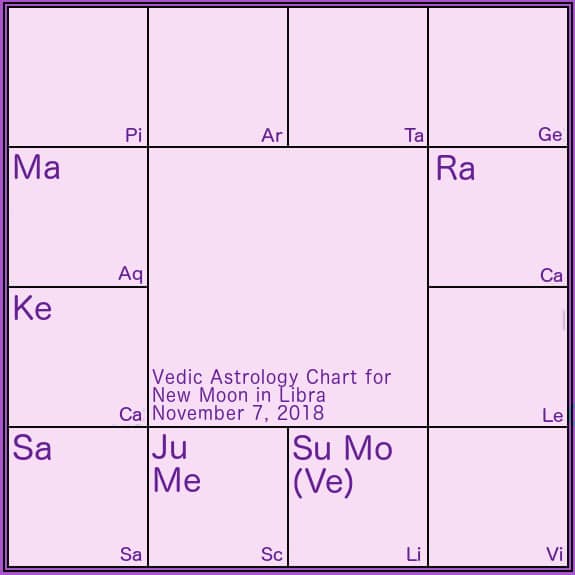
Venus
During this Libra cycle, Libra’s lord, Venus, is joining the Sun and Moon from the onset. He is strong as he travels through his own sign (sva), and even stronger due to his retrograde position (albeit only visible for a short time in the morning currently, since he is traveling so closely to the Sun). This position will give us extra support as we try to navigate the waters of compromise, and insight to be able to reflect back on what we are doing to try to attain happiness. It will help us to see what isn’t working, and gives us the opportunity to try to forge a new path moving forward.
It’s important to look at our own part in conflict and disharmony, and adopt a new attitude or method towards finding happiness and harmony. Venus comes to a halt and turns direct on the 15th, so be sure to take notice of all the insights being offered now and make your plan for how you will move forward.
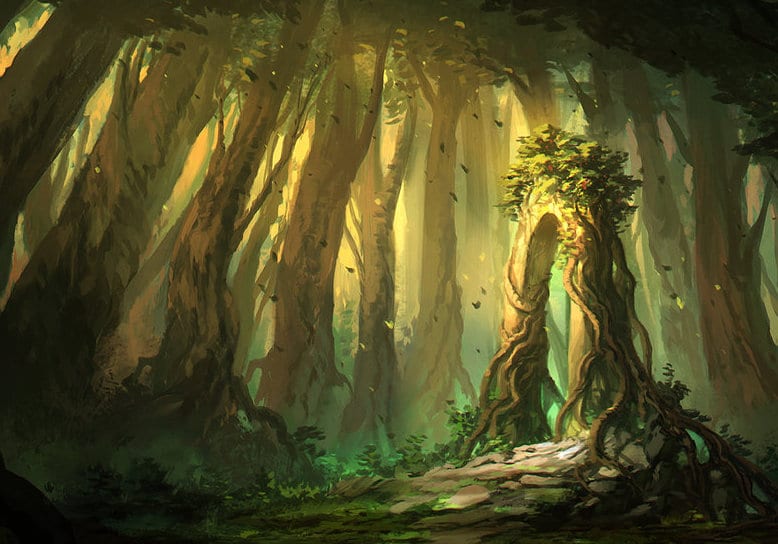 Vishakha
Vishakha
The Sun and Moon are coming together at 21° sidereal Libra for this New Moon, which aligns with the Vedic star-sign known as Vishakha, “the forked branches.” This star is sometimes represented by a set of forked branches, but often as a triumphal archway, indicating that success is possible after doing the difficult work of deciding between two paths. This is even often interpreted as a marriage archway. This star is ruled by the deities Indra and Agni, the chief of the gods and the fire deity, respectively, and can give us quite a bit of power and determination. Under Jupiter’s influence, this nakshatra can be helpful in learning to overcome conflicts and refining our method of compromise and success. Be aware, however, there can be some self-righteousness here due to Jupiter’s and Indra’s influences.
Sun
The Sun is considered neecha or naturally debilitated as he travels through Libra. Since the Sun relates to our sense of strength and vitality, and Libra is the sign of compromising (or over-compromising) with others, it is natural that our individual power can sometimes feel lessened while we elevate the level of energy and attention we give to those around us. Caring for others doesn’t necessarily translate to depleted health, but it can when we overemphasize the outer world and others to the point of neglecting our own self-care. This is a very important time of year to nourish ourselves, and our inner light, as the outer light is descending. Venus’ coincidence in Libra can help us to navigate this balancing act.
Diwali
Hindu culture recognizes this descending light outside, and it is on this New Moon (in the Hindu month of Ashwin) that we celebrate Diwali, the festival of lights. It is a time to invite more light into our lives, our hearts, and our world. This festival celebrates the symbolic victory of light over darkness. At this time we commemorate Lord Ram’s and Sita’s return from exile after fourteen years (story from the Ramayana). Lord Ram embodies the highest qualities of dharma, devotion, compassion, courage, and leadership. It is also a powerful time to connect to the Goddess Lakshmi, calling in her blessings for both material and spiritual prosperity.
Diwali (also seen as Divali, Deepawali or Deepavali) comes from the Sanskrit words deepa (light) and avali (row). It is traditional to light candles throughout Diwali, inviting the highest light into our homes and hearts. The candles are lit to remind us of the inner divine light in us all. Though one flame can be used to light many others, it is not diminished by sharing its power of illumination. We can pray for the peace and happiness of all beings, and each one’s awareness of their inner light.
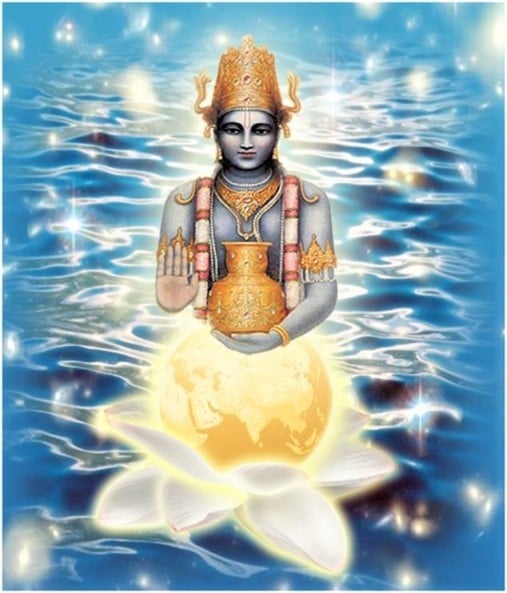 Dhanteras
Dhanteras
Monday, November 5th precedes Diwali with the holiday known as Dhanteras or Dhanvantari Tryodashi (commemorating the birth of Lord Dhanvantari). It is the thirteenth day of the waning Moon in the Vedic month of Ashwin. Lord Dhanvantari is known as the “father of Ayurveda” and the “physician of the Gods.” (Ayurveda is the system of natural medicine from India that is a sister science to yoga and Jyotish.) If you practice any healing tradition, especially Ayurveda, this is a good day to give thanks and call in auspicious blessings to your healing path or practice.
This day also marks Dhanteras, the first day of the Diwali festival. It commemorates the day that Lakshmi emerged from the milk ocean in Vedic lore. In India, it is customary to purchase metals on this day — anything from jewelry to new statues to kitchenware (excluding iron), especially silver and gold — as a part of celebrating Lakshmi and calling in more prosperity. The metals can then be offered to your altar and will absorb and amplify the benefits of worship performed over the few days of Diwali.
Mars-Ketu Separation
After six long months of conjunction in sidereal Capricorn, Mars and Ketu are finally separating. On November 5th Mars leaves Capricorn and crosses over into Aquarius. This has been a complicated transit, as Mars journeyed through his sign of exaltation, strengthening our courage and will, but was simultaneously plagued by Ketu’s fear and confusion.
With a retrograde stint topped with a set of three eclipses in the summer, we had a lot of time to try to understand our deepest fears and how they influence our courage and will (especially in areas of your life ruled by Mars or aligned with Capricorn). Moving forward, we will feel some of the pressure lift from these areas, and hopefully we were able to glean a lot of learning from the visible shadows presented throughout this transit.
Personal readings are available here to help you to better understand your relationship with each planet and how the current transits may affect you.
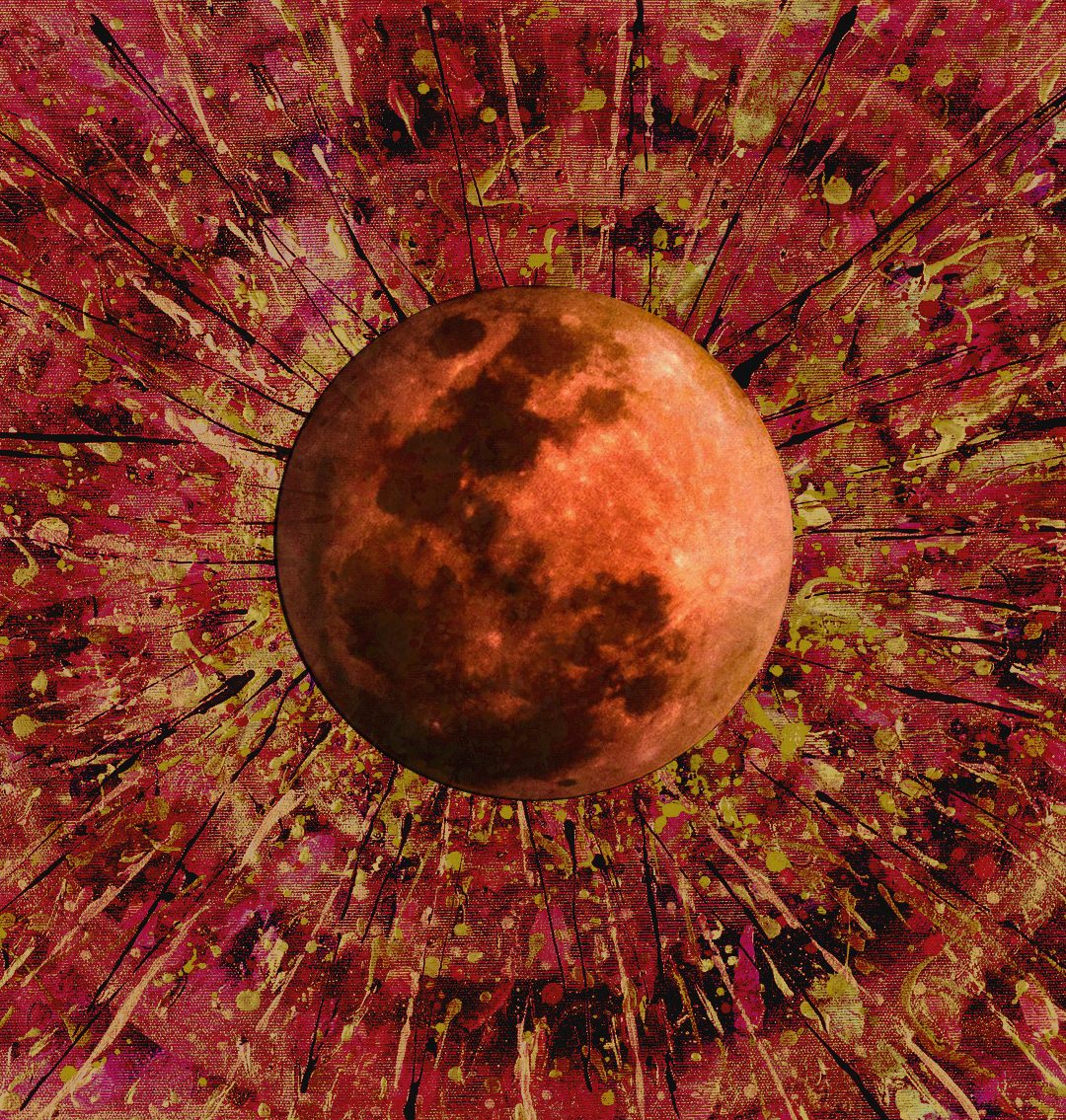
by Somya Devi | Jul 26, 2018 | Uncategorized
Tonight’s waxing Moon is leading up to a powerful full Moon in sidereal Capricorn, peaking on Friday, July 27th at 1:21 pm PDT. On the dark side of the earth, this will coincide with a Total Lunar Eclipse peaking at the same time, but lasting in its entirety for 1 hour and 43 minutes, making it the longest lunar eclipse of this century. The full Moon is in extremely close proximity to both Mars and Ketu, bringing forth a lot of internal fire and intensity surrounding and throughout this eclipse.
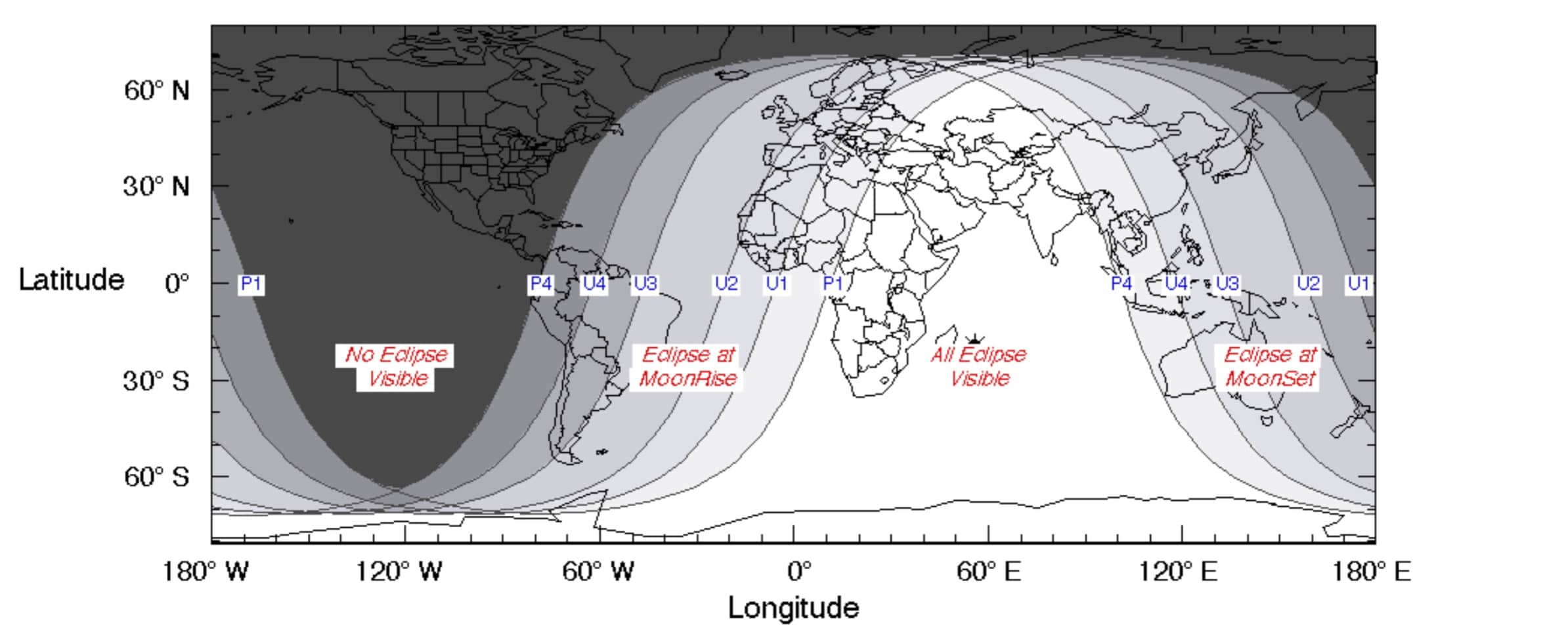
Eclipses – Shadow Forces at Play
This is the second of this summer’s series of 3 eclipses, but this one is perhaps the most intense due to the Sun and Moon’s close conjunction with the nodes and Mars. The Sun and Moon are at 10°39’ of sidereal Cancer and Capricorn, respectively, while Rahu and Ketu (the nodes) are within about one degree, at 11°47’, and Mars is at 9°52′.
The nodes wield a heavy influence from this position, and we may feel a deep discomfort in our physical and emotional bodies during the eclipse, but also over the course of days or weeks leading up to it. This is related to the subconscious forces within us rising to the surface, calling our attention to the areas that need the most work. The mythology behind Rahu and Ketu points to “demonic” energy, or negative internal drives that lead us in the wrong direction until we learn to rise above them. The nodes create a lot of confusion, but as these shadows become visible during an eclipse, we have the opportunity to see where the problems lie and make efforts towards change.

Capricorn-Cancer Lessons
This lunar eclipse occurs on the Capricorn full Moon, when the Moon is directly opposite the Cancer Sun. During the Cancer Sun cycle we find our strength through our emotional body, and by following the sensations of the heart and our human desire for comfort, love, and care. With Rahu so closely joining the Sun in Cancer, however, emotions can be extremely exaggerated and confusing during this time.
As the Moon waxes into fullness in the opposite sign of Capricorn, our emotional bodies (normally) find peace by embracing structure and responsibility, in this grounded earth sign. With Ketu’s presence here, however, we may feel or see a strong resistance to structure and commitment, as Rahu’s obsessive nature, in Cancer, draws us instead towards emotional intensity.
A great opportunity of this eclipse is to see where and when we let our emotions get the better of us, and also where and when we may need to stand more firmly in our commitments and take responsibility for our actions. The intensity of Rahu and Sun in Cancer can also cause us to have wide open boundaries, while the eclipse of Ketu and Moon in Capricorn shows us where we can use some more structure.
Saturn, Capricorn’s ruler, is always stern and still in retrograde motion, bringing extra cause for serious reflection around these themes. A total lunar eclipse can be draining on the heart, however, so it’s important to be more gentle with ourselves and more inward on this full Moon than we normally are during this lunar phase.
This eclipse will particularly effect you in the “houses” that are Cancer and Capricorn in your Vedic chart, as well as any planets you have there natally. If you’ve not downloaded it yet, you can receive the free e-book with an eclipse forecast for your sign, after joining the free mailing list here.
Eclipse Practice
In general, Indian tradition advises against starting any auspicious activities during an eclipse, or really doing any worldly actions in general if it can be avoided. The best practice is to do some type of sadhana such as meditation, prayer, mantra, or quiet reflection. It is advised not to eat or drink during the eclipse, and not consume anything after that has been left out during the eclipse, as the atmosphere is said to carry a negative energy during the eclipse. The eclipse will occur from 10:14 am – 4:28 pm PDT, with the total eclipse lasting from 12:30 pm – 2:13 pm PDT.
Mars
In addition to the powerful emotions brought on by the solar-lunar-nodal positions during this eclipse, Mars is also bringing a lot of fire by his proximity. His close conjunction with the Moon (within one degree) will bring forth a warrior-like passion. Still moving in retrograde motion, and traveling through his sign of exaltation, we may be experiencing some deep-seated animal instincts arising. Any anger or enthusiasm that has been brewing beneath the surface may rise alongside the shadows of the eclipse.
Mars will have reached exact opposition to the Sun some hours before, so he will be at his brightest as he travels right next to the Moon tonight and tomorrow night. His powerful light shining on us presents the chance to find our inner warrior and use his strength to strengthen ourselves, taking this chance to embrace responsibility, self-discipline, and commitment, as well as to create more structured boundaries around us. The confusion and surprising/explosive nature of Ketu, however, could cause this inner warrior to arise in a fume of anger if we are not careful.
Mercury
Mercury is also conjunct Sun and Rahu in Cancer during this eclipse, as he is stuck in the gandanta zone (the karmic “knot”) at the end of Cancer near Leo. He’s now in stationary-retrograde motion there. This can add an intense strain to communication. Being in Ashlesha nakshatra (the sign of the water serpent and kundalini), there is the potential for sharp poison to come through our words at this time, but also for conversations that lead to real inner transformation.
Shravana
The Moon and Ketu lie in Shravana nakshatra at the time of this lunar eclipse, the sign of listening. While Mercury is in such a challenged but potent position, we should remember that a huge part of communication lies in the listening. Pay close attention to the words you are hearing and the conversations you are having around this eclipse. Furthermore, it’s time to listen deeply with the inner ear, and ask for the great spirit(s) to speak to you and guide you through the shadows that are arising.

Eclipse periods often feel like they are disruptive, because we often hear and experience things that are unwelcome or cause stress in our lives, but these things give us a great opportunity to see where we can create change, and grow into the people that we really want to be. This eclipse particularly shows us where we need to balance our emotions, boundaries, and responsibilities, and also balance the two houses (or areas of life) shown by Cancer and Capricorn in your Vedic natal chart. Our prayers and willingness to inquire and self-reflect around this time can lead to great change and greater balance.

by Somya Devi | Sep 20, 2017 | Astrology, Events, Holy Days
Maha Navaratri 2017 begins today! In this important Hindu holiday, we celebrate the Goddess through “the great nine nights” (nav = nine, ratri = night). This festival will run through September 30th, the first ten days of this new lunar cycle. Goddess, Devi, Shakti, Durga, Divine Mother—the many names and forms all represent the dynamic and fluid feminine power that enlivens all of existence.
She is the creatrix, the warrioress, the nurturer, the purifyer, the protector. While she’s in the innocent and fertile maiden so is she the wise and learned crone. Both the nurturing mother, and the one who gives “tough love.” The impassioned lover, the devoted bhakta, the disciplined yogini. We see Goddess appear through us in innumerable manifestations. Through her many forms she teaches us and offers us countless blessings–love, compassion, courage, learning, discipline, surrender, success, enlightenment, and bliss. This festival is a time for celebrating the supreme feminine power in all her glory, and the many blessings she bestows upon us.
As with most Hindu celebrations, this festival correlates with the lunar calendar, and thus begins on the first day of the waxing Moon after the New Moon of September 19th. The celebration is through the “nine nights” of 21st through 29th, and into the eleventh morning known as Vijayadashami, “the day of victory,” on September 30th in some places (because of the way the lunar phases correlate with the solar days… Check the Vedic panchanga for your city to see the exact dates for Navaratri where you are.). Worship during Navaratri is most generally dedicated to Goddess in the form of Durga, the demon-slayer, but there is much nuance and variation to practice and forms of celebration throughout India. Above all, Navaratri is a community celebration of the Divine Mother, and the love, abundance and protection she gives.
There are many Navaratri celebrations throughout the year, but the fall-time Navaratri is the most widely celebrated, and is thus called Maha Navaratri – “the great nine nights”. It correlates with the time of the harvest, a time to give thanks for the abundance of the year’s work. Grains and crops are often offered to Devi as part of the celebrations. Ritualistic worship (puja) typically occurs in homes and temples throughout the nine nights and into the tenth morning of celebration.
The Many Forms of Goddess
Durga-Lakshmi-Sarasvati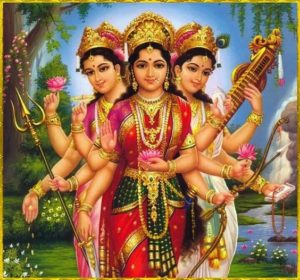
In Kerala and other places in India, the first three nights of worship are dedicated to Durga (the invincible), the next three to Lakshmi (Goddess of prosperity), and the final three to Sarasvati (Goddess of learning). Durga, also celebrated as her incarnation of Kali, helps us to destroy and remove the negative tendencies in our minds and hearts, freeing us from the obstructions to our spiritual and material pursuits. Lakshmi helps us to cultivate positive qualities like compassion and devotion, and leads us towards both spiritual and material prosperity. Sarasvati assists us in attaining knowledge and wisdom, through the illumination of our consciousness. She aids in awakening sattva, the quality of purity, and the flow of prana, the vital breath. After removing inner and outer obstacles and cultivating prosperity through virtuous qualities, our devotion, service, and practice help us to attain a state of peace, bliss, and oneness.
Sarasvati-Lakshmi-Kali/Durga
In the Kali Kula (Kali school of worship) in northeastern India, Sarasvati is worshiped on the first three nights, followed by Lakshmi on the next and then Kali/Durga on the last three. Sarasvati, Lakshmi, and Kali/Durga (Kali emerged from Durga) are also known as the consorts of Brahma, Vishnu, and Shiva. The Goddesses, therefore, provide the shakti to the cosmic processes of creation, preservation, and death (transformation), similar to their male counterparts. Consequently, worship in this manner is dedicated to the cycles of life and Mother nature, through birth, then sustenance, then death. Death is not a complete stop, but allows for the regeneration of energy into a new cycle once again.
9 Forms of Durga
Throughout India, the nine nights of Navaratri are often dedicated to 9 different incarnations of Durga, allowing the worship of many different aspects of Shakti in a gradual evolution. You can read the stories and significance of these 9 goddesses here (or click on Goddess name below), or a more a brief introduction, here:
“Daughter of the mountain”; creative energy, muladhara (root chakra), awakening; Awaken your connection with Goddess today or initiate a new venture, calling on Shailputri for new beginnings.
The ascetic; tapas, discipline, devotion, strength, wisdom, creative abundance; Good day for fasting and meditation, connection with svadhistana (sacral chakra).
Warrioress; protection, courage, grace, manipura (solar plexus); Destroy your internal obstacles by offering them to Chandraghanta.
4. Kushmanda (September 23rd)
Creatrix of the “cosmic egg”; strength, health, happiness, success, relationships; Connect with the vital Sun energy and the anahata (heart chakra) today.
“Mother of Skanda/Kartikeya”; motherly love, nourishment, protection, purity; Call on divine truth through the vishuddha (throat chakra), invoking Skandamata to lead you towards victory.
6. Katyayani (September 25th)
Warrioress who destroyed Mahishasura (the buffalo demon); victory, devotion, strength, removing obstacles; Meditate on these qualities of Goddess through the ajna chakra (third-eye) today.
7. Kalaratri (September 26th)
“Dark/black night,” representing a fierce form of Durga/Kali; darkness, death, surrender, dissolution of pain; Connecting with the sahasrara (crown chakra), remember that Divine Mother offers love, compassion, and many blessings even in hard times. Even in the midst of apparent darkness, and helps us to go beyond the boundaries of the material body-mind and connect with spirit.
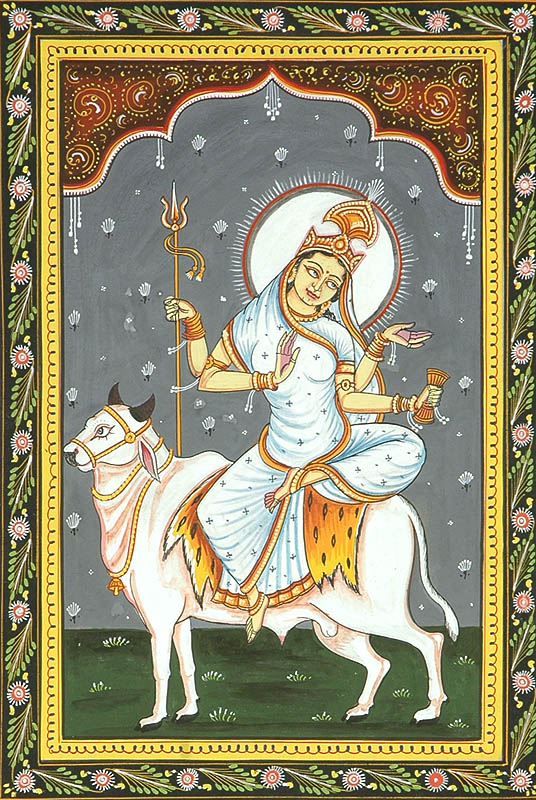 8. Mahagauri (September 27th-28th)
8. Mahagauri (September 27th-28th)
“Great white goddess”; detachment, purification, renewal, protection, virtue; Through detachment and devotion, we emerge purified, shining and radiant after surrendering in the dark night. Rejuvenative herbs and foods are good today.
Goddess of “siddhis”; magical, spiritual or mystic powers and blessings, fulfillment of desires, devotion, divine union; Invite Goddess to reveal her presence to you everywhere and in every moment.
Personal Practice Ideas for Navaratri
If possible, it is great to reduce our workload and gather with community at local temples or places of worship. We can also create a little time and space at home and conduct some personal practices to celebrate Goddess energy. Dive into your own heart to connect with the inner Goddess in the ways that resonate most with you! Here are some ideas to do at home or with a group throughout the nine nights of Navaratri:
Altar
Create a sacred space, a Durga altar, or a Goddess altar. Even if you already have one, you can refresh it in some way or rearrange it specifically for Navaratri. Include images or statues of the Goddess(es) you have a relationship with. This could be according to one of the groups of forms above.
Invocation
Even if you don’t have much time, dedicate at least a few minutes each day to connecting with the Divine Mother in front of your altar, calling her energy into your life and being.
Journal
Write in your journal about what qualities of Goddess you perceive and connect with. What aspects would you like to strengthen or to cultivate more deeply? Write any and all prayers and offer them to the form of Goddess that appeals to you.
Light
Offer light to illuminate Goddess’s power, helping her to shine more brightly into the world and your life. You can light a candle by the altar and keep it burning when you’re at home. You can even keep an electronic tealight on symbolically when you are away.
Flowers/Grains
Offer flowers or grains (even a small dish of dried rice) to celebrate Devi in the form of mother nature, fertility, the abundance of the harvest, and the cycle of life.
Offerings
Offer incense, bells, water, or food if you feel called, by placing it on the altar, or mentally offering it to Goddess throughout the day. You can also offer something symbolic of your own work or practice, whatever you have been cultivating for harvest through the year. In offering this you surrender the fruits of your efforts to the Divine Mother.
Fasting
Some people choose to fast in some variation, if this is something you have practiced before. This might include fasting during the day, fasting with only milk or fruit, or abstaining from alcohol and non-vegetarian foods during Navaratri.
Chanting
Chanting the Devi Mahatmyam, a verse to the Goddess, is a common practice during the nine-night festival. You can also chant another Goddess mantra or songs that are special to you and your relationship with Devi.
Jai Ma Durga!
Personal Vedic Astrology readings and forecasts are available Here.
Did you like Maha Navaratri 2017? Please Like, Comment and Share!
Save
Save
Save
Save
Save
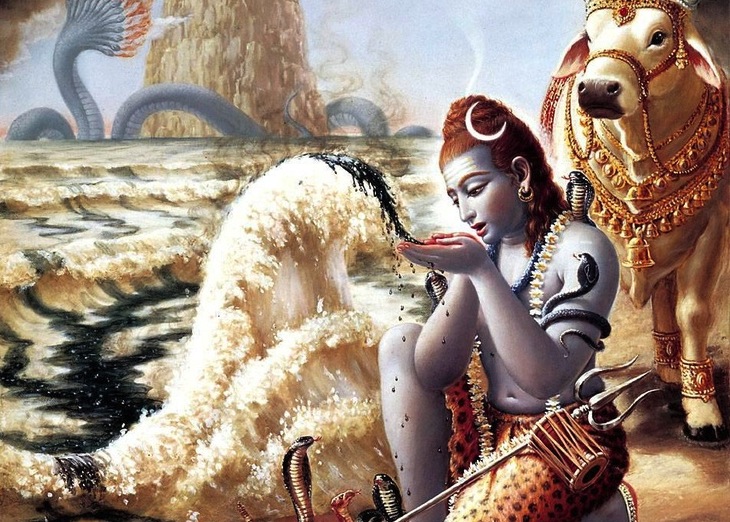
by Somya Devi | Feb 22, 2017 | Astrology, Conjunctions, Eclipses, Events, Holy Days
Healing Eclipse on the New Moon + Maha Shivaratri
Sunday begins the New Moon cycle and brings with it a powerful eclipse whose alignment offers some deep healing opportunities. The annular solar eclipse will be visible from much of Africa, South America, and Antarctica, and will coincide with the exact time of the darkest Moon phase at 6:58 a.m PST (14:58 UTC) on Sunday, February 26th. This eclipse occurs with the Sun, Moon, Mercury, and Ketu all in sidereal Aquarius within the Vedic nakshatra of Shatabisha.
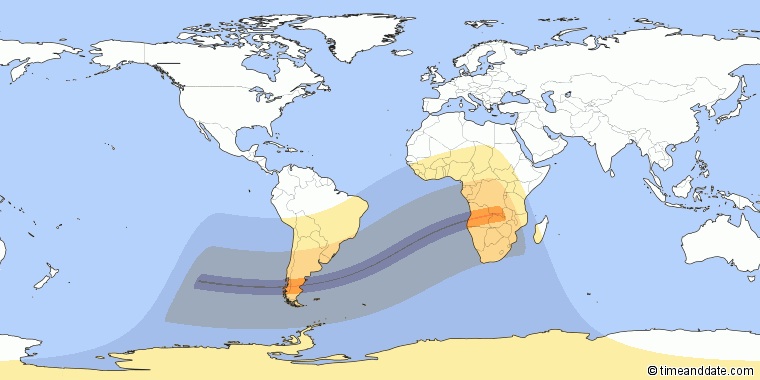
Aquarius
Aquarius is a sign ruled by Saturn, and it is where we remember something greater than ourselves. It is where we become inspired towards universal service, and to offering effort into society and for the greater good. Saturn, the planet of pressure and time, is aspecting the planets of this eclipse from his recent seat in sidereal Sagittarius, compelling us even more deeply to stand up for our principles and beliefs, and commit ourselves to these through hard work.
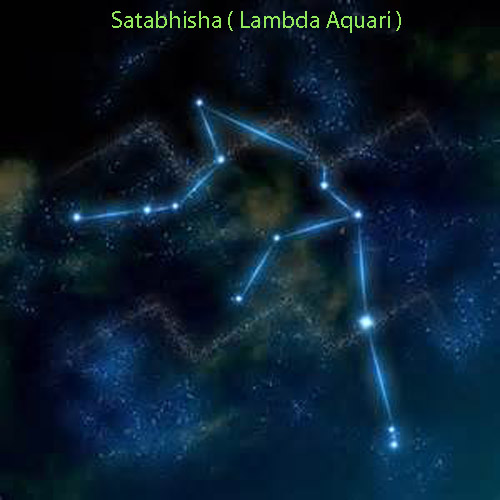
Shatabisha
Shatabisha is the Vedic nakshatra that most elicits the concept of healing. It is the star of the “100 physicians” or the “100 medicines,” and is ruled by Varuna, the deity of the cosmic waters. With many planets under the influence of this star, we are strongly called towards our journey of self-healing, trying many different medicines and healing techniques to get there. Having Ketu here, eclipsing the Sun and the Moon, presents the opportunity to go deeply into our subconscious blockages and find release from past karma and trauma.
The Greater Eclipse Cycle
This is the third solar eclipse that has occurred since Rahu and Ketu transited into the Leo-Aquarius axis in January of 2016 (download the Free E-Book and Forecast by Sign for this transit if you haven’t yet!). Throughout this time, we have experienced shadows and blockages coming up around the themes of the Leo-Aquarius axis. On a broad scale, this relates to the balance of personal power and universal service that we play out through society. On an individual level, it has raised questions around the house-themes of Leo and Aquarius in the personal Vedic birth chart.
We have been uncovering layers of our own karma through this time, and discovering where change is needed in our lives–either through a change in our actions or a change in our thoughts. Our personal challenges become most apparent during the eclipse windows, which have occurred this month, as well as during August and March of 2016. Though these windows can be difficult times, the power of the lunar nodes helps us to see where we are stuck. With self-awareness and observation it becomes less difficult, but when we are not paying attention or are clinging to our own attachments, the eclipses can feel like they are wreaking havoc on our lives.
Since this is the third and final pair of eclipses during this transit of Rahu and Ketu, it is a time for really reaching some clarity around the lessons being brought up over the last year-and-a-half. Eclipses do cause confusion and are inauspicious in general, but as we do the work of self-inquiry and practice astute awareness, we can gain insight and more light after going into the darkness of their shadows. The healing power behind Shatabisha nakshatra may present us with some different medicines, or practices, to assist in our evolutionary process, assisting us in learning how to flow better with the cosmic waters.
Shivaratri
In addition to the healing energy of this nakshatra, we are receiving the powerful gift of deep meditation offered by the Shivaratri holiday. Maha Shivaratri (or Sivaratri) is “the great night of Lord Shiva,” celebrated in India and around the world each year on the 14th night of the waning Moon this month. This year it falls on the night of Friday, February 24th into Saturday the 25th, around the world (except for mid-Australia/Japan and Eastward, where it falls on the 25th/26th).
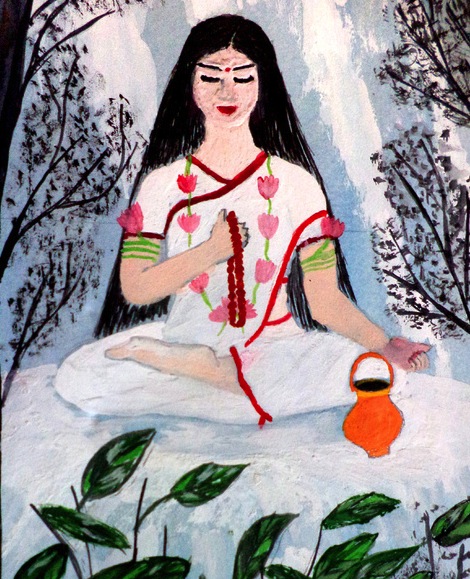 On Shivaratri, it is a common practice to stay up the whole night in meditation, fasting and praying. This commemorates the sacrifice made by Lord Shiva when he kept the poison that arose from the milk ocean in his throat in order to protect the entire creation. In this story, his wife Parvati held his throat to keep him from consuming the poison, and thus this holiday also commemorates the union of masculine and feminine forces, Shakti and Shiva, yin and yang. In many places this is represented by a celebration of Shiva and Parvati’s wedding, and one may see large statues of the two paraded about town and worshiped.
On Shivaratri, it is a common practice to stay up the whole night in meditation, fasting and praying. This commemorates the sacrifice made by Lord Shiva when he kept the poison that arose from the milk ocean in his throat in order to protect the entire creation. In this story, his wife Parvati held his throat to keep him from consuming the poison, and thus this holiday also commemorates the union of masculine and feminine forces, Shakti and Shiva, yin and yang. In many places this is represented by a celebration of Shiva and Parvati’s wedding, and one may see large statues of the two paraded about town and worshiped.
Shiva and Parvati represent the path towards awakening consciousness through the ascetic side of yoga, and the practices of tapas and renunciation. By renouncing food and sleep for one night, particularly on the night of Shivaratri, we can gain some of the benefit of the austerities that these two performed for aeons. Tapas, or austerities, are yogic practices of undergoing difficult situations in order to gain more patience, as well as deeper understanding that we are in fact the eternal soul and not the body-mind with which we normally identify.
On this Shivaratri, as we approach the transformative energy of the eclipse in Shatabisha, the opportunity for overcoming the challenges and shadows of our minds is great. The power of group meditation occurring all over the world also contributes to this. With the energy of Aquarius behind us, let us offer the fruits of our practice towards the peace and happiness of all beings on earth, and spread the benefit for the greater good.
Mantras for Maha Shivaratri:
Om Namah Shivaya (the panchakshari mantra – “I bow down to infinite consciousness”)
Tyagenaike Amrtatvamanashuhu (by renunciation alone, immortality is gained)
Personal chart readings are available to delve deeper into the meaning of this eclipse cycle in your life.
Did you like Healing Eclipse on the New Moon, following Maha Shivaratri? Please Like, Comment, and Share!







 Vishakha
Vishakha Dhanteras
Dhanteras





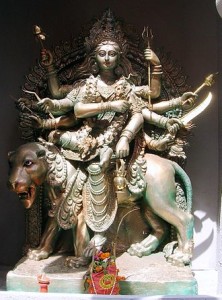




 On Shivaratri, it is a common practice to stay up the whole night in meditation, fasting and praying. This commemorates the sacrifice made by Lord Shiva when he kept the poison that arose from the milk ocean in his throat in order to protect the entire creation. In this story, his wife Parvati held his throat to keep him from consuming the poison, and thus this holiday also commemorates the union of masculine and feminine forces, Shakti and Shiva, yin and yang. In many places this is represented by a celebration of Shiva and Parvati’s wedding, and one may see large statues of the two paraded about town and worshiped.
On Shivaratri, it is a common practice to stay up the whole night in meditation, fasting and praying. This commemorates the sacrifice made by Lord Shiva when he kept the poison that arose from the milk ocean in his throat in order to protect the entire creation. In this story, his wife Parvati held his throat to keep him from consuming the poison, and thus this holiday also commemorates the union of masculine and feminine forces, Shakti and Shiva, yin and yang. In many places this is represented by a celebration of Shiva and Parvati’s wedding, and one may see large statues of the two paraded about town and worshiped.